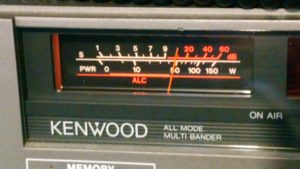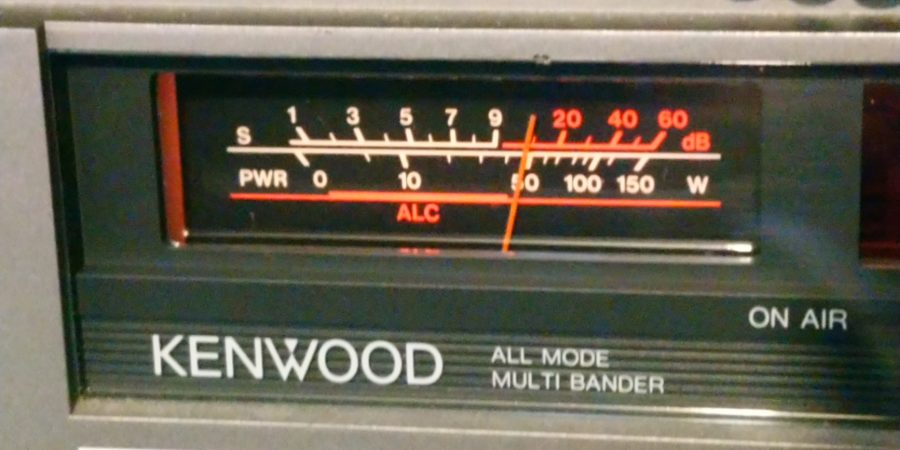
An ‘S’ meter on your radio receiver is the first indication that you have something better than a kitchen radio. Zenith Transoceanics and later Panasonic series of AM/FM/SW receivers had ‘S’ meters. (my Panasonic RF2600’s meter is switchable, Battery voltage or signal strength)
.
This meter (above in red) is on a 1980ish Kenwood 680 HF and 6M rig. Shows calibrated ‘S’ signal strength readings, and in transmit mode, either Power Out or the ALC reading. ALC is Automatic Level Control, a means of reducing AM modulation by feedback so you don’t over modulate and splatter, one of your most important adjustments when transmitting. (You run your mike gain up until the ALC begins to indicate which tells you voice peaks are at 100%. If you want a little more power and don’t care if your voice sounds compressed and distorted, you can run the mike gain up some more, but never past the max ALC range.)

In the 1990s, Kenwood made the TS440 and 450, somewhat similar rigs with 100W out, general coverage receivers, and 100 memories. The 440 had a LOT more aluminum in back and was rated key down for an hour.
.
The meter on the Kenwood 440 had three (3) options on transmit, Power Out, ALC, or SWR. (You can just see the slide switch on the left, Power Out in the middle and SWR when you slide it right.) Both 440 and 450 had optional internal tuners.
.

Oh, now back to that (Japanese) Panasonic series of receivers. This is the RF2600 S meter and (early) digital freq display in fluorescent blue. The meter is backwards, that is, shows a “10” reading when it’s To The Left! How did that happen? Did the engineering crew get it ‘wrong’ or were they trying to save electricity on a portable battery operated rig by not using another milliamp to run the meter on strong signals?
.
The Panasonic meter has a second function: Run the RF Gain control all the way down and the meter goes up to the “Battery” green area if the power supply is at maximum.
.
Some recent rigs, those run by computers, offer more meter functions.

Meters
News / Monday, July 5th, 2021